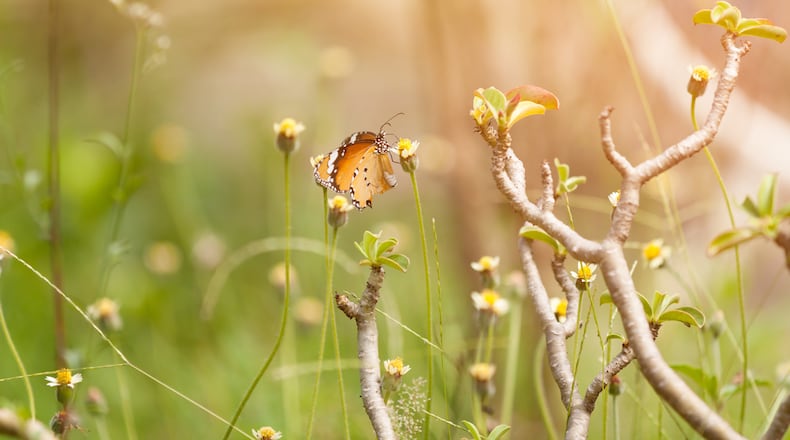Moon Time: The Maple Flower Moon wanes throughout the week, reaching apogee, its position farthest from Earth, on the 18th and entering its final quarter at 10:58 a.m. on March 20.
Sun Time: Even though the day lengthens at different rates at different locations, equinox is still equinox at exactly 5:29 a.m. March 20 in the whole country. The Sun enters the Middle Spring sign of Aries at the same time.
Star Time: If you scan the horizon an hour or so before sunrise, you will see the wandering stars of Capricorn in the southeast. In the south, find Sagittarius, and then Scorpius (easily identified by the red star, Antares, in its center). West of Scorpius, is boxy Libra. West of Libra is Virgo, marked by Spica, the brightest of the western stars.
Weather Time: The March 19 Front: The cold front that arrives within a day or two of equinox marks the end of the worst of the weather systems of the first half of the year. Expect precipitation and frost with this high, and the greatest likelihood for thunder and lightning since the end of last summer. After the front passes through, look for sun and more frost, then a decided warm-up. Although the "first day of spring" is often chilly, it is frequently partly to mostly sunny.
The March 24 Front: This front, like the March 14th system, is relatively mild, and it is followed by some of the driest and brightest days so far in the year.
Zeitgebers: Events in Nature that Tell the Time of Year: When you hear turkeys gobbling in the woods, then toad trillium will be pushing up through the mulch.And when you see the first violet periwinkle blooming, then you know lamb's quarters, beggarticks, pigweed and amaranth are sprouting in the garden. When goldfinches turn summer gold, then early spring is ending, and middle spring will arrive within a week.
When white-flowered magnolias bloom, then snow trillium will be blossoming in the bottomlands, and sandhill cranes will be migrating north in the Rocky Mountains. When scillas color the lawns blue, then raspberry leaves will be ready for tea, and touch-me-nots will have sprouted in the swamps.
When you see early spring’s first butterflies — the question marks and the tortoise shells and the cabbage moths — then catfish are getting ready to feed, and when pollen forms on all the pussy willows, then yellow-bellied sapsuckers are mating and violet cress is opening along the rivers.
Farm and Garden Time: As the moon wanes, livestock owners begin their regular worming of livestock in warmer years in order to reduce parasite egg counts. And the waning moon of March is ideal for starting all root crops directly in the garden (or in flats, if the weather is cold).
Start a journal listing the bloom dates for the spring bulbs in your garden or that you see flowering in the neighborhood. That way, you can tell the future flowering dates (more or less).
Frost-seed the pastures where the ground is still freezing and thawing on a regular basis. If you have fruit trees, complete your spraying with dormant oil before temperatures get any warmer and buds break dormancy. Mites, scale, and aphid eggs will mature quickly when the temperatures climb above 60 degrees. The insects will be more easily controlled by dormant oil spray the closer they are to hatching.
Mind and Body Time: The horoscope of nature brings good news this week. The moon is waning and reaching its weakest position farthest from earth; birdsong is increasing before dawn, and the odds for sun and for milder weather increase by the day. At the same time, color is increasing in pastures and lawns, and more bulbs and early wildflowers are coming into flower. Influenced by all these factors, physical and psychological problems temporarily lighten, allowing for some of the first benign episodes of spring fever.
Creature Time (for fishing, hunting, feeding, bird watching): When the weak moon moves overhead near dawn, fishing picks up in the morning hours, especially as the barometer falls in advance of the March 24 cold front. After that front passes through, but before the chilling front of the 29th, expect gentle weather and some of the best angling so far this year. Scout for flocking turkeys and listen for newly arriving birds as you keep your line in the water.
Journal
Late afternoon, warm in the low 60s, the early spring accumulating.The dogs and I cut across the swamp through the soft matting of new chickweed.
April was budding with the wild phlox and geranium leaves. Leafcup was bushy and six to eight inches tall. One skunk cabbage had leaves, the others still full bloom.
Hillsides were glowing with fresh plants. A mourning cloak butterfly, black and gold, flew by. Hemlock was boot high and fat. At the mill, maples were flowering red, and the river was rushing over the dam. Finches, half golden, were chasing each other through the trees.
The wheat fields were such a bright green on the way home. The first groundhog was out along the highway switching its tail back and forth.
The first tulip, pale yellow, was open in the south garden when I arrived. The purple crocus in the south garden was budding. Daylilies just beginning to emerge from the ground.
Tonight, a toad was singing hard and long in the pond.
About the Author
